In collaboration with the volunteer organization JP Aerospace, Azuma Makoto and his colleagues successfully launched a 50-year-old bonsai white pine tree along with various other plants such as orchids, hydrangeas, and lilies into space.
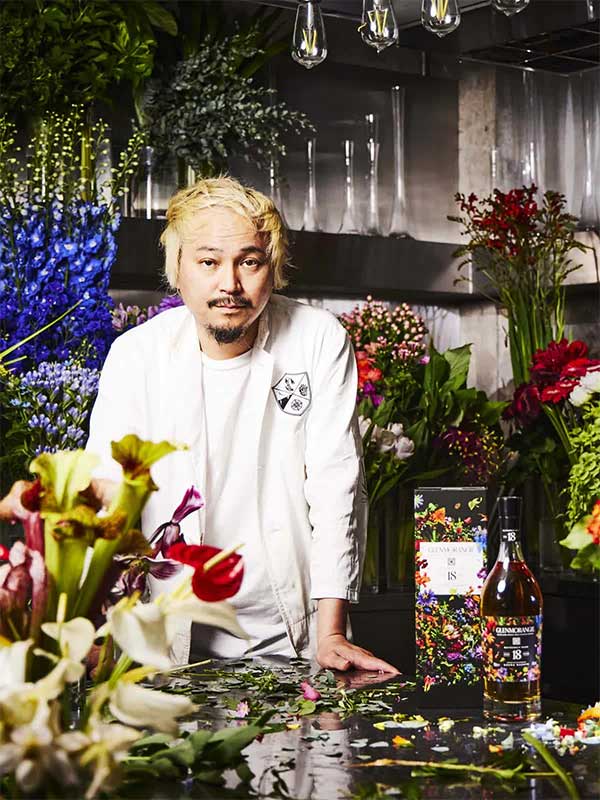
Azuma Makoto is a Japanese artist born in Fukuoka Prefecture in 1976. Most of his works revolve around floral art, particularly plant sculptures and installations. In his early years, he dreamed of becoming a musician, which led him to move to Tokyo. There, to make ends meet, he began working at a flower shop. This experience completely transformed his life as he discovered the beauty of flowers and their similarities to music. Starting in 2002, this Japanese artist began innovating with his installations and sculptures, becoming a pioneer in the field and gaining significant international recognition. When asked about his artistic methods, Makoto is sure to mention scissors. He believes that if you want to achieve anything great, you must have tools you can trust. For him, the ability to precisely cut flowers is one of the secrets to creating his artworks.
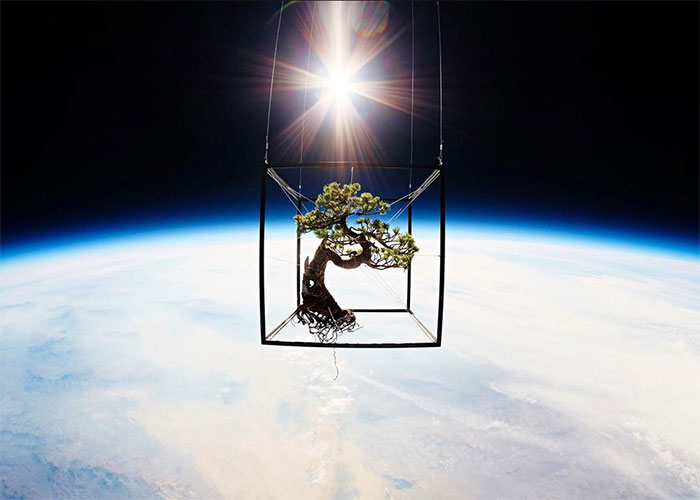
Azuma Makoto is the first artist to send bonsai trees into space. Using some wires, he suspended a 50-year-old Japanese white pine tree in a cube-shaped metal frame. This bonsai comes from Azuma’s personal collection, and he designed the suspension frame to hang beneath a helium balloon to elevate the small tree into the stratosphere. He also did the same with a bouquet of flowers. Volunteers from JP Aerospace in California assisted Azuma in installing satellites equipped with GPS sensors and GoPro cameras to document the journey. On a dawn morning in July 2014, the tree ascended above the skies of the Black Rock Desert in Nevada, and these images were captured.
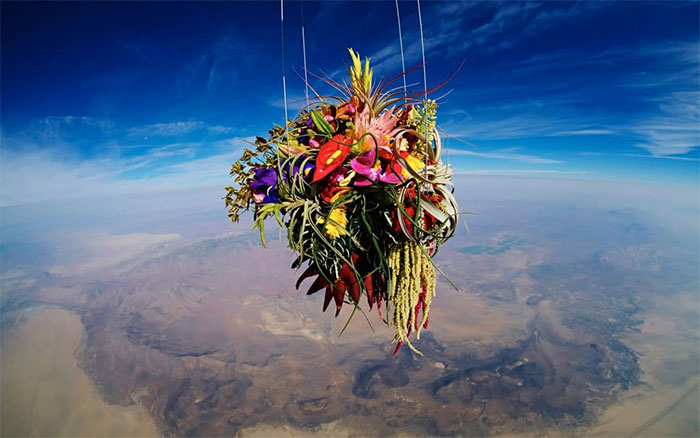
Working from midnight until dawn the next day, Azuma’s research team had to ensure that the plants and their supporting equipment were accurately attached to the helium-filled balloons. Tracking devices, cameras, and video recorders were also sent along with the plants to capture memorable images of the flight. On his website, Azuma shared profound messages about his project. He wrote: “Plants on this Earth are always rooted in the ground due to the force of gravity. Roots, soil, gravity, and crops—what beauty do they have besides ‘life’? When plants are taken out of the Earth, they endure a harsh environment at an altitude of 30,000 meters in -50 degrees Celsius. They move toward the beautiful sun in fierce winds of space. Once freed from any constraints, plants will freely reach for the space beyond Earth.”
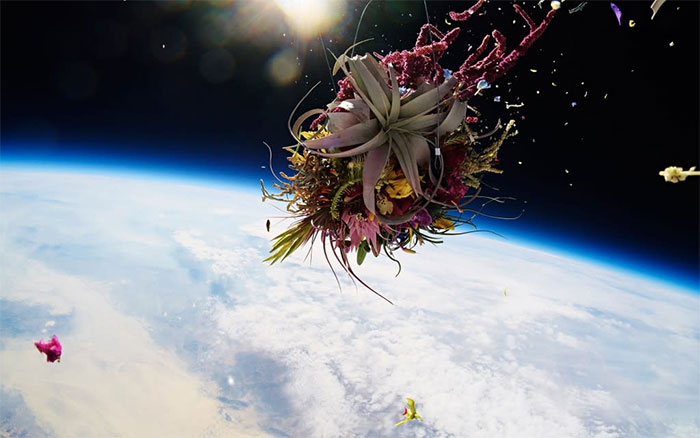
In 2002, he opened his flower workshop named Jardins des Fleurs in collaboration with photographer Shunsuke Shiinoki. For Makoto: “Flowers are inherently beautiful, even when they bloom in a field. We humans remove them from their natural state by cutting them. Then we tie those flowers together. Thus, it is necessary to transform them into something even more beautiful so that the lives of these flowers and plants do not become meaningless. By placing them in a harsh environment, such as outer space or a desert, I can create a special beauty by presenting them in a way that has never been seen before. This form of expression is the only viable option for me.”

Azuma Makoto “assembles” expressive flowers into captivating artworks, giving them a different appearance and function in life, which is to be felt. Regarding this, Makoto has sent floral and bonsai artworks to the stratosphere and documented their journey in an experiment called Exobiotanica. He has also suspended trees deep under the ocean, on snow, or in deserts and freeze-dried flowers and mushrooms in acrylic casings to symbolize the serene beauty standing before destruction.
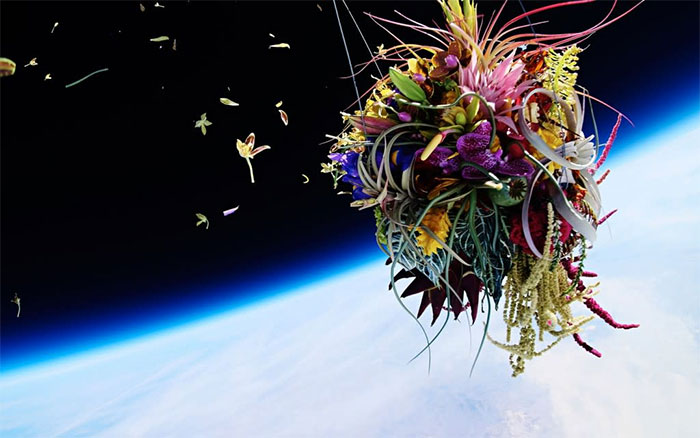
One example of this idea is his work Block Flowers, which he believes represents “the desire for time to stand still and eternally preserve beauty as it was formed.” The beauty in flowers or plants is ephemeral; their enchanting colors, wonderful scents, and delicate shapes cannot last long. The artist’s desire is to capture this beauty, as it can disappear within days.
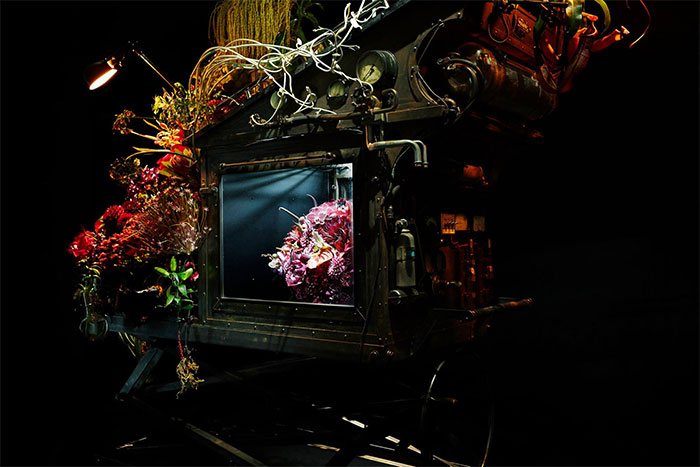
In other artworks created on Earth, he has also placed flowers in large ice blocks, specifically 16 large ice blocks. The artist’s goal in this piece is to explore the expression of flowers in an environment different from their usual surroundings and to reveal the interaction between ice and flowers, creating a truly admirable contrast.


















































